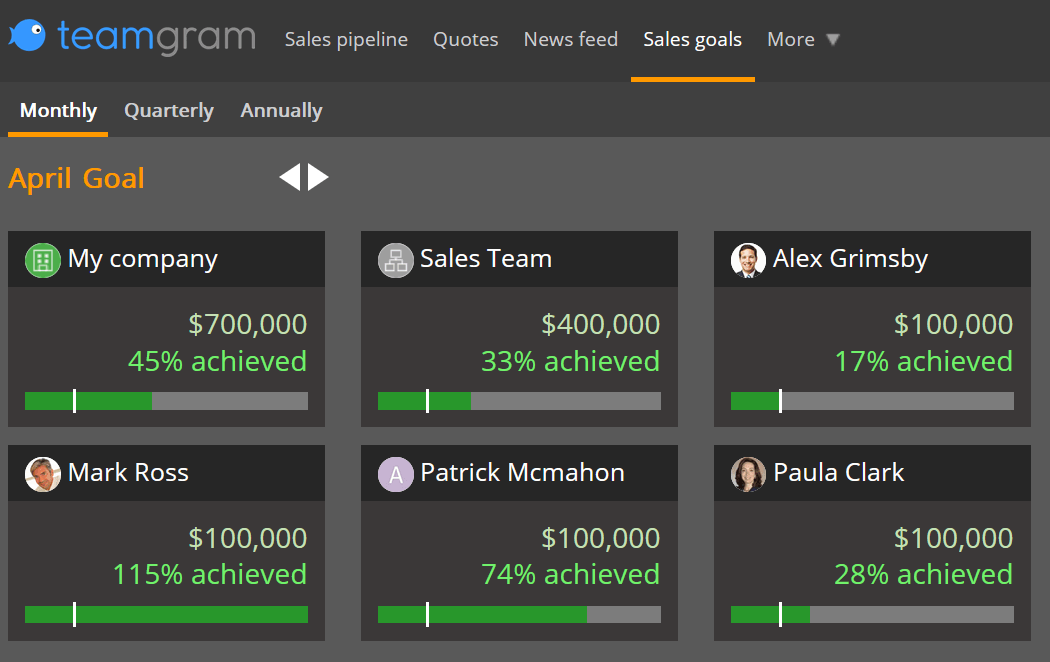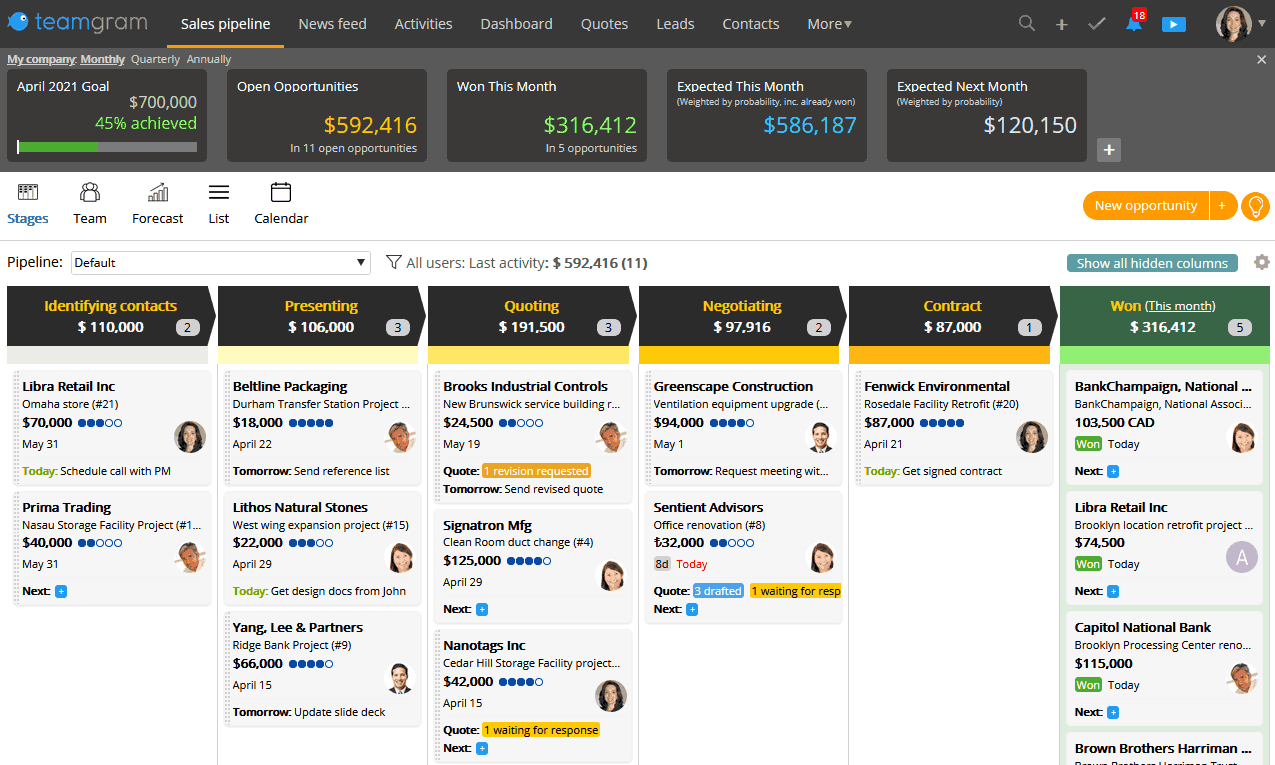So what is a sales plan?
A sales plan organizes your sales objectives, methodology, target audience, and potential obstacles. In other words, a sales plan lays out sales targets and tactics for your team and identifies a method to meet your company’s targets.
A sales plan should:
- Communicate your company’s sales objectives to your sales team
- Provide strategic direction for your sales team
- Account for possible obstacles your sales team can encounter
- Define roles and responsibilities for your sales team
- Create incentives for your team to achieve objectives
- Monitor your sales team’s performance and quantify success and progress
Components of an elaborate sales plan
- Target audience: Who does your company aim to serve with its products and services?
- Revenue objectives: How much revenue each individual or team is expected to return in a given period? What happens if they meet or exceed those revenue objectives? What happens if they fail to do so?
- Define the sales process: What are the specific actions your team will take to reach revenue targets?
- Pricing: What are you selling and at what price?
- Competitive landscape: What does the industry you compete in look like? Who are your major competitors? How do you distinguish yourself from others?
- Organizational structure: What are the roles and responsibilities of the people in your team? Based on the sales plan, nobody should be confused about what they do!
- Tools & Data Capturing: How will you track your sales activities? Which CRM will you use to define goals, track sales pipeline and performance? ( Find out more about TeamGram CRM)
- Objection handling strategies: Within time, you will see that similar customers have objections about similar things. Group these objections and come up with how you want your sales team to address these common roadblocks.
- Performance metrics: How will team and individual performance be measured in your organization? The more you quantify success within the sales plan, the better.
Now that we covered the components of a sales plan, the question is where to start.
Target Audience
How you define your target audience might vary depending on how much data you have on your customers.
If you are working for an established company with historical sales data:
Start by gathering historical sales data and observe specific customer segments that are ideally suited for your company’s goods & services.
- Is the sales cycle particularly short for a group of customers?
- Is the churn low for a group of customers?
- How does the LTV compare for different groups of customers?
Once you have a story about the data, interview your sales team to see how their experience lines up with the data. Then, see if you can combine the two to answer what your ideal customer looks like.
- Are they in a specific industry? Are they of a certain size?
- Do they have a specific title?
- Do they come to you with specific needs?
If you do not have a ton of sales data to analyze or reps to interview, start by posing the question: Who can be a good fit for our products & services? The answer you come up with may not necessarily be correct, but it will define a specific target market to focus your sales efforts. You can redefine your target audience along the way and experiment with different segments with a structured approach.
Revenue Objectives & Performance Metrics
Well-defined revenue goals are an essential component of a sales team. Using CRM software with goal tracking capabilities, you can define monthly, quarterly and annual goals for different teams or individuals. You can track the progress in real-time without having to meet for any sales reports.
Having visibility into the sales team’s performance allows sales leaders to track progress and take action before it’s too late.

Start by defining your revenue objectives and then reverse engineer quotas, sales activities, and organizational structure needed to meet your objectives. Revenue goals are for your business, but they can look unattainable or too grand for individuals in your team. A good sales plan will also clarify what each team player needs to do and the personal goals they need to achieve for the company to achieve revenue targets.
For example, a sales development representative in your organization might not understand how the organization will grow 30% in the next quarter. However, it is an achievable goal for them to schedule 10 meetings a day.
Sales Process
A sales process is a series of repeatable steps a sales team takes to move a prospect from an early stage of awareness to a paying customer.
A framework can guide your team on how to close clients. From the beginning of the sales journey to the end, every team member should understand the next steps.
Here is an example of a sales process defined in TeamGram. The closer a qualified lead moves from left to right, the closer they are to purchasing. The process has well-defined stages, such as making a presentation, giving a price quote, or sending a contract. These steps are repeated as part of the sales process, no matter who the customer or the salesperson is.

While most sales teams are aware that they go through a similar process, few standardize it. A standardized sales process can significantly improve measuring, forecasting, and managing the sales function as you scale your team.
Pricing & Competitive landscape
This one seems straightforward. However, pricing conversations can get very complicated. The pricing of your product is arguably the most important signal that your company is projecting to the world about the value it provides. Therefore, your sales plan should outline how your pricing works and discuss how the pricing translates to your market positioning.
Your sales team must encourage customers to think about return on investment (ROI) rather than obsess over the price. It is common to hear customers make comments about pricing even at the very beginning of sales conversations. Expensive or cheap relative to what?
ROI discussions require your salespeople to ask the right questions that guide the person they talk with to evaluate and quantify problems they face.
Similarly, a strong understanding of the pricing of competitors is critical. Your sales team should be able to explain the positioning of your team within the competitive landscape.
Organization structure
Within your sales plan, you need an organizational structure that outlines the roles and responsibilities of everyone. How you choose to organize your team can depend on many factors. Four of the most common ways are as follows:
- Geography
- Product & service l
- Customer size
- Industry
Perhaps you manage three salespeople and work closely with a marketing specialist that helps your team with prospecting. Define the role and responsibilities of each position, how performance is measured and how incentives work ( salary, commission, career path).
If you are planning on growing the team, provide information on the number of employees, their roles, and when you plan to hire the new members.
Tools & Data Capturing
You have defined the revenue objectives and the performance metrics. You have defined the roles and responsibilities of your team members. Now the question is how to keep track of everything.
Deciding on which CRM you will use is a huge decision. By using a CRM, you are aiming to :
- Have visibility into your sales pipeline
- Collaborate effectively
- Optimize your sales team’s time
- Nurture your customer relationships
- Automate reporting and track performance
Selecting a customizable CRM solution will allow you to meet your organizational needs. However, the question is not just which CRM is right for you but also how to use it. That’s where the data capturing piece comes in. Some sales leaders famously use the phrase “If it’s not in our CRM, did it even happen?”. You don’t have to be as strict about data entry, but make sure you provide clear guidelines about when, how, and where sales data should be entered by your sales team.
Objection Handling
Practice makes perfect, but your team doesn’t always have time to wait for everyone in your organization to learn how to handle difficult situations.
“Your product is too expensive!”
“I have a better rate from a competitor.”
“I don’t think you can help me. “
“Maybe not right now. Let’s reconnect in three months.”
Do any of these look familiar to you? The excuses and objections you hear from customers might be specific and different from each other. However, when you boil them down to the fundamentals, they will typically fall under one of these:
- Lack of Trust
- Lack of Budget
- Lack of Need
- Lack of Authority
- Lack of Understanding
- Lack of Urgency
Come up with an approach for your sales team to handle these objections in your sales plan.
Pro-tip for objection handling: Use a CRM that allows you to record loss reasons. Analyzing the common reasons you lost opportunities in the past can help you better prepare for the future.
Summary
In summary, a sales plan organizes your sales objectives, methodology, target audience, and potential obstacles. It takes time to build a sales plan. The good news is: Once you have one, it is all about updating the existing plan!
